
Coolant Flush and Replacement – BMW N20 Turbo 4 Cylinder Engine
Step 1 - Purchase Parts
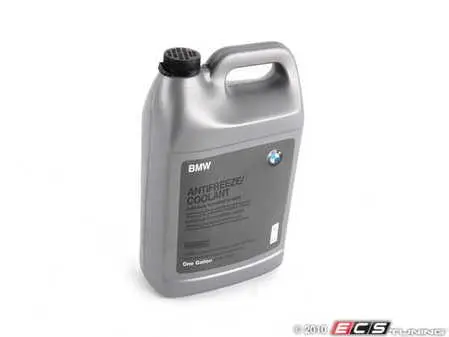
Antifreeze/Coolant
This is the same factory coolant that would be installed at the dealership. Aftermarket coolants actually cost more than Genuine BMW...so why would you use them? Mixed 50/50 with distilled water, this container makes 2 gallons of factory coolant.

Coolant Vacuum Fill Tool
Whether you are a home mechanic or shop professional, there is only one way to properly refill the coolant system on a BMW - with a vacuum fill tool. This inexpensive tool easily attaches to the expansion tank creating a vacuum that "sucks" the coolant into system, virtually eliminating any air pockets that could cause engine overheating. Never try and refill your coolant system without one.
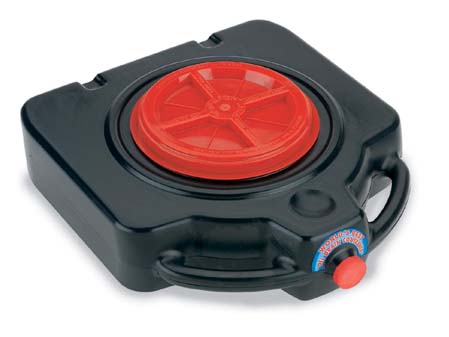
Drain Pan 15 qt
The best oil and coolant drain pans do the following: catch the fluids without spilling and store them in a container that can be easily taken to the recycling center for dumping. This fantastic 15 qt drain pan does both. Not only is it low enough to slip easily under your vehicle, but it seals tightly so you can take the fluids to a responsible recycling facility without spilling in your vehicle.
Step 2 - Repair Procedure

Be prepared to capture coolant.
Before starting this repair, make sure you have a suitable drain pan ready to capture the coolant. Please see our parts and supplies list above if you need to purchase one.
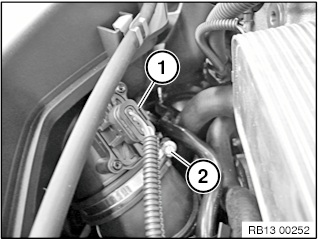
- Unplug the mass air meter (1). Loosen the hose clamp (2) on the intake air duct.

- Unclip the cable (2) from the intake muffler (3).
- Grasp the intake muffler and pull it free from its rubber mounts (1)
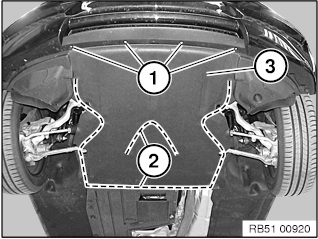
- Remove the front under body protection panel (3) by removing its screws.
- The under body panel must be removed to access the lower coolant hoses that drains the system.

- Remove the cap (1) from the coolant expansion tank. This will ensure the coolant drains completely out of the system.
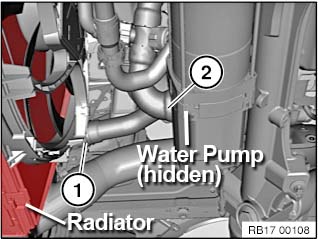
- Position a 5 gallon drain pan under the front of the car.
- Release the coolant hose (1) from the radiator and allow it to drain thoroughly into the pan.
- Disconnect coolant hose (2) from the front of the water pump and allow the engine block to thoroughly drain.
- Carefully reconnect both hoses making sure there are no air leaks.

- The engine must be refilled with coolant using a vacuum refill tool. The vacuum refill tool is inexpensive and should be a standard item in every home mechanic's or professional repair shop's tool box. Please see our parts block to order a vacuum refill tool if you do not have one.
- Never attempt to refill the coolant system without the vacuum refill tool. It will leave air pockets that could potentially cause engine overheating.
Please watch the following video to learn how to properly use the coolant vacuum refill tool.

The N20 engine has an automated bleeding process that takes approximately 12 minutes. It is manually initiated by following the next step.
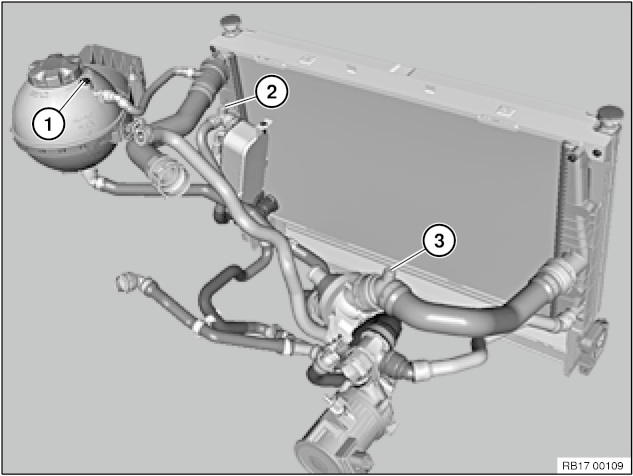
- Locate the three manual bleeder screws in the coolant system - expansion tank (1), transmission oil cooler (automatic transmission only) (2), and coolant return hose (3).
- Begin by filling the coolant expansion tank >all the way to the top (past the max fill line).
- Open bleeder screw (1) at the expansion tank. Next, open bleeder screw (2) at the transmission cooler until coolant runs out smoothly without any bubbling. Close the bleeder screw (2).
- Next, open bleeder screw (3) at the coolant return hose until coolant runs out smoothly without any bubbling. Close the bleeder screw (3).
- Close bleeder screw (1) at expansion tank.
Initiating the automated bleeding process
- (Optional) Hook a battery charger to the vehicle. Since the bleeding process takes 12 minutes, it may run down the battery to a point where the vehicle can't be started.
- Turn the ignition on (do not start vehicle).
- Turn on the low-beam headlights and hazard warning lights. If these lights are not turned on, the ignition will shut itself off before the bleeding process is done!
- Verify the vehicle is not set to ECO PRO.
- Set the heater to maximum temperature and the blower to its lowest setting.
- Depress the accelerator pedal all the way to the floor for 10 seconds then release.
- The automated bleeding process has been initiated. You can verify by listening for a humming sound coming from the water pump.
- The bleeding process takes approximately 12 minutes. When it is finished, top off the coolant and secure the expansion tank cap.
